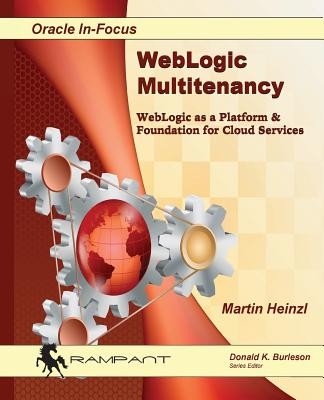
- We will send in 10–14 business days.
- Author: Martin Heinzl
- Publisher: Rampant TechPress
- ISBN-10: 0986119423
- ISBN-13: 9780986119422
- Format: 19.1 x 23.5 x 2.5 cm, minkšti viršeliai
- Language: English
- SAVE -10% with code: EXTRA
Reviews
Description
With WebLogic 12.2.x a complete new concept - called partition - was introduced into WebLogic in order to support multitenancy setups and concepts. This new technology can also serve as a solid foundation for cloud services and cloud hosting. A partition is - similar to a filesystem partition - meant to be a well-defined area of WebLogic, with some new and powerful features. Other than the standard J2EE bundling units like EAR, WAR or RAR archives, the partition goes beyond that and allows a bundling of applications (J2EE units) and required resources like JDBC, JMS and more into a single "WebLogic application" based on the partition technology. Partitions can also be exported, migrated and imported as a single unit. Many real world use-cases can benefit significantly from the new multitenancy technology. This book explains the new WebLogic technologies in detail. In addition to the technology deep-dives, this book discusses many use-cases found daily in our industry and shows the potential benefit of multitenancy technologies for these scenarios. Key Features: Overview and deep-dives into the new WebLogic technologies around multitenancy Many examples using WLST scripting in order to automate partition handling All scripts and programs can easily be adapted to the reader's need Discussion of a number of real-world uses and how these could benefit from multitenancy Focus on architects, decision-makers, administrators and developers
EXTRA 10 % discount with code: EXTRA
The promotion ends in 22d.20:42:51
The discount code is valid when purchasing from 10 €. Discounts do not stack.
- Author: Martin Heinzl
- Publisher: Rampant TechPress
- ISBN-10: 0986119423
- ISBN-13: 9780986119422
- Format: 19.1 x 23.5 x 2.5 cm, minkšti viršeliai
- Language: English English
With WebLogic 12.2.x a complete new concept - called partition - was introduced into WebLogic in order to support multitenancy setups and concepts. This new technology can also serve as a solid foundation for cloud services and cloud hosting. A partition is - similar to a filesystem partition - meant to be a well-defined area of WebLogic, with some new and powerful features. Other than the standard J2EE bundling units like EAR, WAR or RAR archives, the partition goes beyond that and allows a bundling of applications (J2EE units) and required resources like JDBC, JMS and more into a single "WebLogic application" based on the partition technology. Partitions can also be exported, migrated and imported as a single unit. Many real world use-cases can benefit significantly from the new multitenancy technology. This book explains the new WebLogic technologies in detail. In addition to the technology deep-dives, this book discusses many use-cases found daily in our industry and shows the potential benefit of multitenancy technologies for these scenarios. Key Features: Overview and deep-dives into the new WebLogic technologies around multitenancy Many examples using WLST scripting in order to automate partition handling All scripts and programs can easily be adapted to the reader's need Discussion of a number of real-world uses and how these could benefit from multitenancy Focus on architects, decision-makers, administrators and developers


Reviews